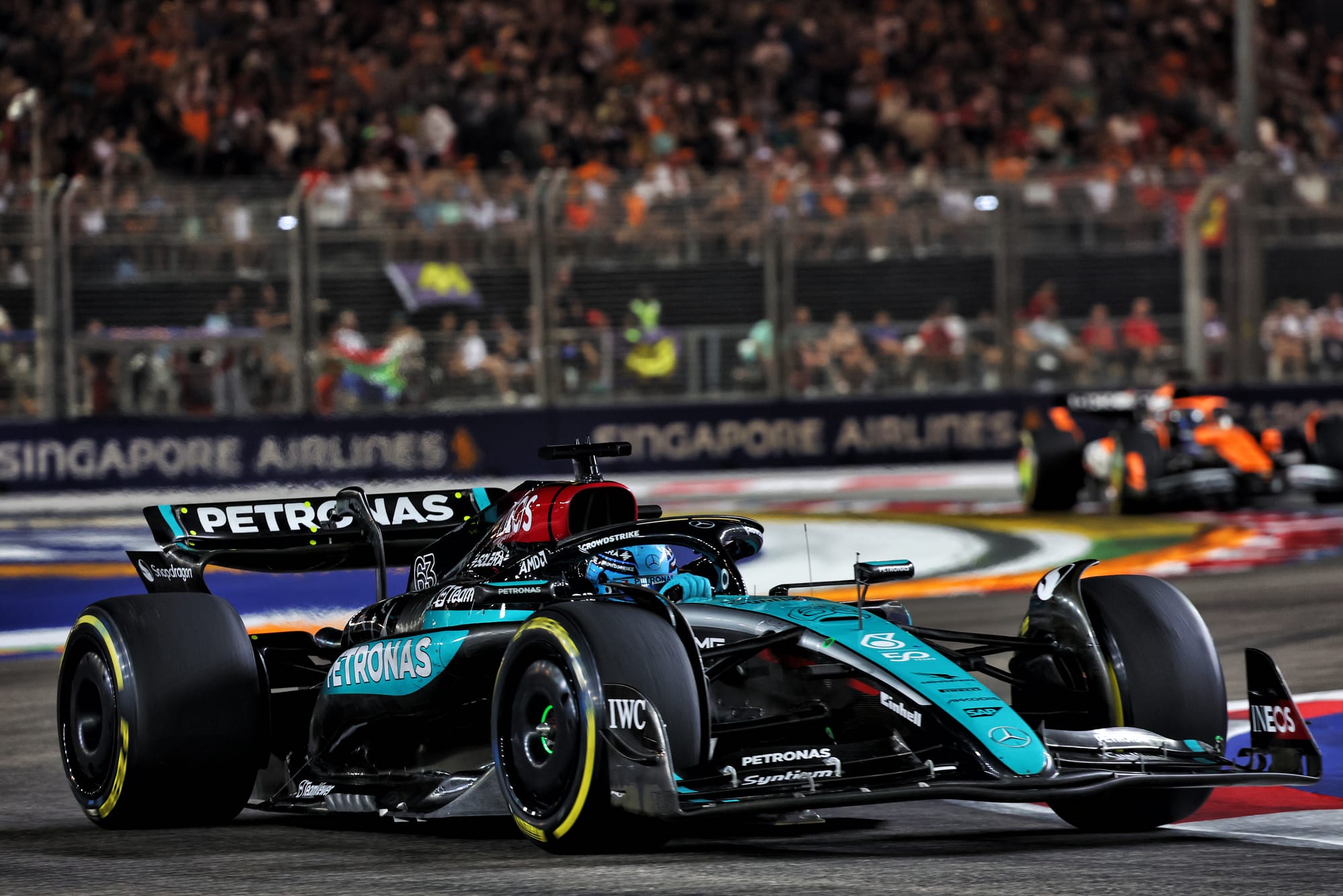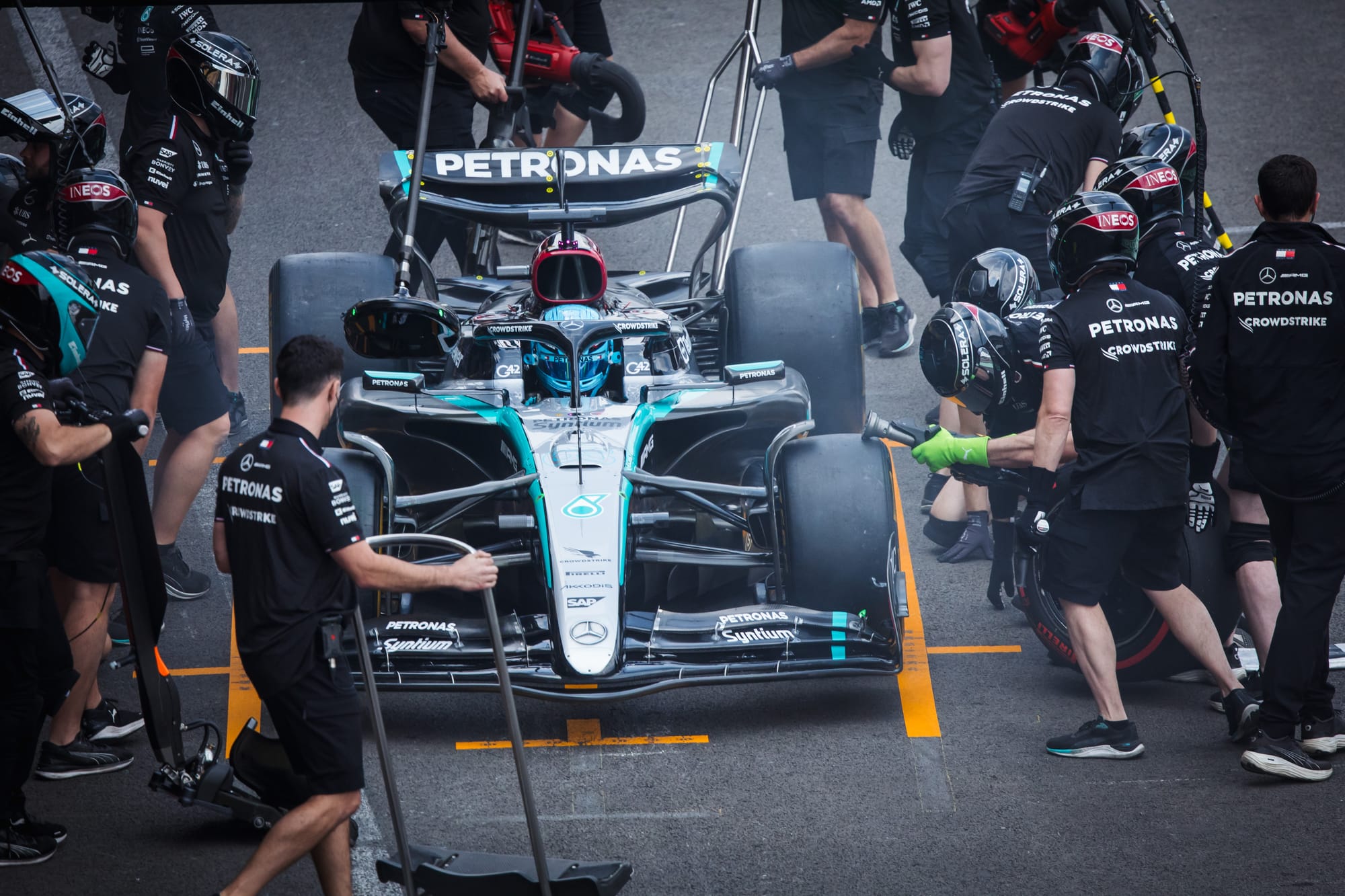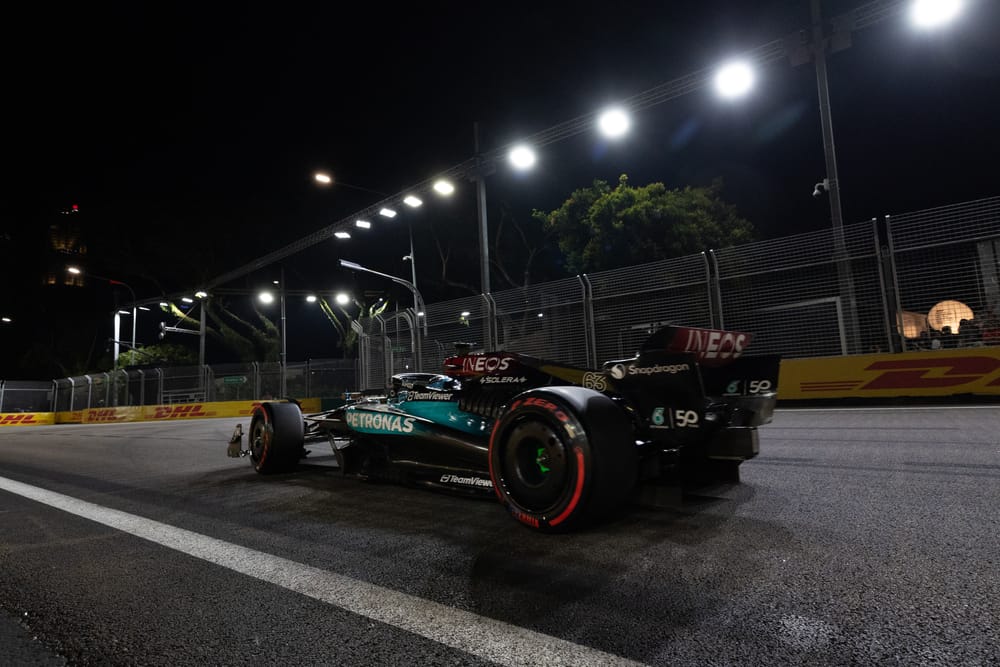Mercedes had the fastest Formula 1 car last year. The problem was that was only the case on a few weekends.
At circuits such as Spa and Las Vegas (and in certain conditions) Mercedes was unbeatable but it was nowhere at places like Singapore and Mexico. Mercedes knows that level of yo-yoing is never going to deliver it a title in this generation of cars.
So redressing that balance and making its W16 more of an all-rounder has long been the goal since the early days of the 2025 car's conception last year.
"There have been a lot of...I wouldn't say changes directly from last year to this year, these are things that have been in the pipeline for a long time, items that we couldn't quite put on the car in 2024 but we've been working on them for a long time," George Russell explained to Sky Sports F1.
"We're optimistic it will be a good step in the right direction. You obviously never know what your rivals are going to have done."
All of Mercedes' rivals also experienced fluctuations from circuit-to-circuit but no frontrunning team had such extreme ones as Mercedes did - in part due to its problems with rear-tyre overheating in hotter races.

"That's an area where I don't think we are as good as McLaren, Red Bull or Ferrari, and that's probably affected us most recently at tracks like Singapore [where the Mercedes duo were over one minute adrift of McLaren's race winner Lando Norris]," Mercedes trackside engineering director Andrew Shovlin explained last December.
"So we're looking at what we can do to get temperature out of the rear tyres and any work in that area is two-fold. One, can we can we put less temperature in? And the other one is, can we take more temperature out?
"But that's clearly an area where, on a Sunday, we had a big gap to the front in some of those races and definitely an area of focus [this] year."
Mark Hughes's take

Getting the heat out of the tyres is all about improving the heat extraction from the wheel rims created by braking, which involves both material technology and design.
Reducing the heat put into the tyres is less simple. It can be that the rear tread surface is overheating and this is typically from excessive sliding force, either from a relative lack of downforce, too sudden a transition of rear load or from poor traction. The latter can be from unsuitable suspension geometry feeding the loads into the tyre in an unhelpful way, with high peak loads.
Or it can be that the core of the tyre is being overstressed (possibly through asking the tyre to handle more downforce than it is capable of withstanding). In this case, the structure of the tyre will no longer be able to adequately support the tread.
Those two possible problem traits can obviously have almost opposing root causes. The fact that Singapore is cited as a particular problem is more suggestive of a tread (rather than a core) overheating trait.
Given that Russell said it was something which could not be addressed with last year's car, it could be he is referring to a suspension geometry matter which required different pick-up points on either the chassis or gearbox end.



